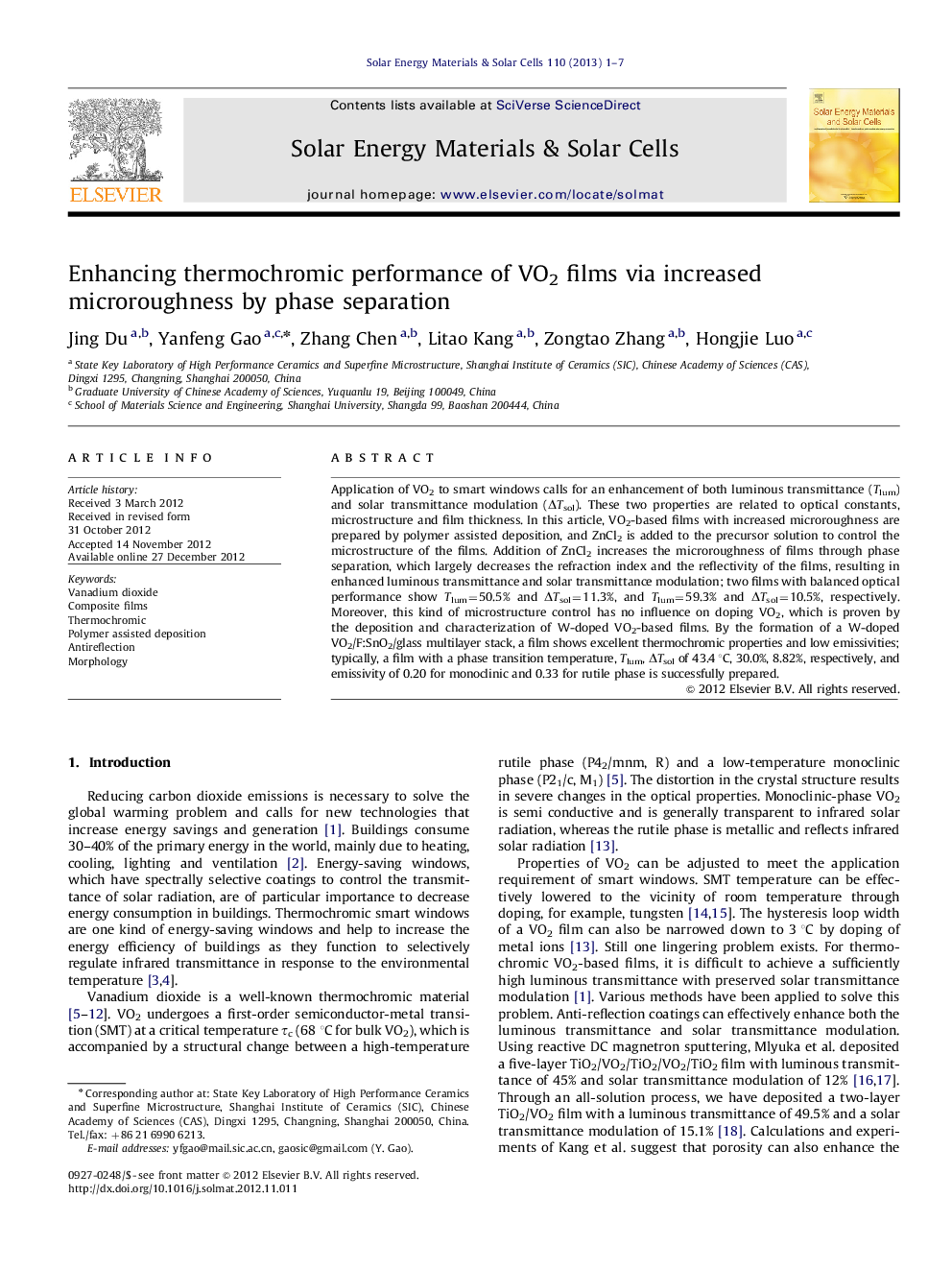| Article ID | Journal | Published Year | Pages | File Type |
|---|---|---|---|---|
| 78579 | Solar Energy Materials and Solar Cells | 2013 | 7 Pages |
Application of VO2 to smart windows calls for an enhancement of both luminous transmittance (Tlum) and solar transmittance modulation (ΔTsol). These two properties are related to optical constants, microstructure and film thickness. In this article, VO2-based films with increased microroughness are prepared by polymer assisted deposition, and ZnCl2 is added to the precursor solution to control the microstructure of the films. Addition of ZnCl2 increases the microroughness of films through phase separation, which largely decreases the refraction index and the reflectivity of the films, resulting in enhanced luminous transmittance and solar transmittance modulation; two films with balanced optical performance show Tlum=50.5% and ΔTsol=11.3%, and Tlum=59.3% and ΔTsol=10.5%, respectively. Moreover, this kind of microstructure control has no influence on doping VO2, which is proven by the deposition and characterization of W-doped VO2-based films. By the formation of a W-doped VO2/F:SnO2/glass multilayer stack, a film shows excellent thermochromic properties and low emissivities; typically, a film with a phase transition temperature, Tlum, ΔTsol of 43.4 °C, 30.0%, 8.82%, respectively, and emissivity of 0.20 for monoclinic and 0.33 for rutile phase is successfully prepared.
Graphical abstractFigure optionsDownload full-size imageDownload as PowerPoint slideResearch Highlights► Enhancing thermochromic performance of VO2 films via increased microroughness by phase separation. ► ZnCl2 is added to form VO2-based composite films. ► Addition of ZnCl2 increases the microroughness of films through phase separation. ► These films show decreased refraction index and the reflectivity. ► These films show enhanced luminous transmittance and solar transmittance modulation.
